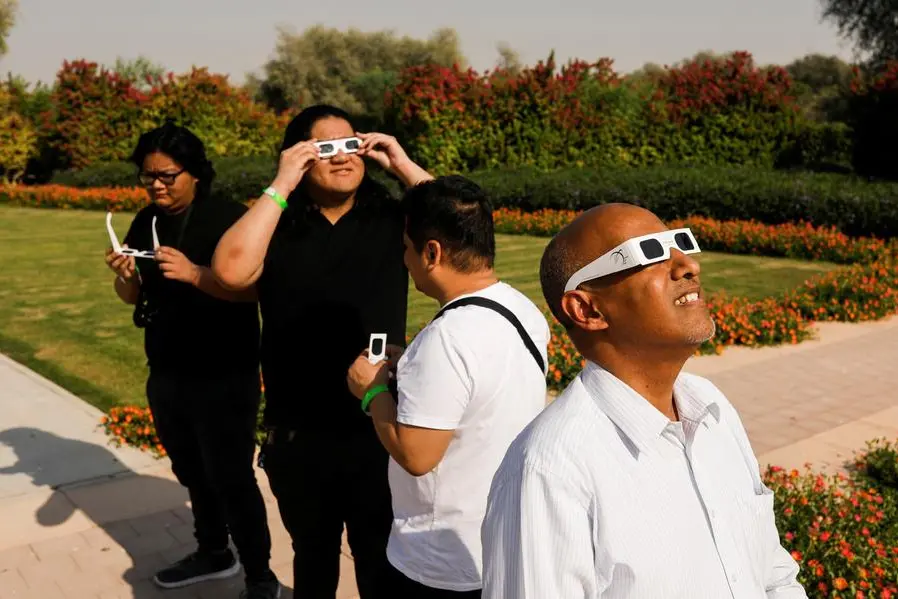PHOTO
Sky-gazers around the world can look out for a rare and strange astronomical event coming up on April 20, although UAE residents may find it difficult to observe the phenomenon due to its location.
Dubbed the first ‘hybrid eclipse’ in a decade, on Thursday, the Moon will block out the Sun as it places itself in between the Earth and the Sun.
While some parts of the world will witness a total eclipse, others will see an annular eclipse, making this event a hybrid eclipse.
Experts highlight solar eclipses, including hybrid eclipses, provide an opportunity for scientists to study the sun's corona, which is visible during a total solar eclipse.
“These studies help to better understand the sun and its effects on the Earth. In Dubai, on April 20, 2023, the Sun will be positioned at an altitude of -25°, with a Right Ascension of 01h 49m 09.0s, and a Declination of 11° 14' 26.0".
Meanwhile, the Moon will also be at an altitude of -25°, but with a different position in the sky, specifically a Right Ascension of 01h 44m 29.1s, and a Declination of 9° 23' 23.0". The UAE will not be in a location where the eclipse is observable on April 20,” explains Sarath Raj, Project Director – Amity Dubai Satellite Ground Station and AmiSat, Amity University Dubai.
A hybrid solar eclipse, also known as an annular total eclipse, is a rare type of solar eclipse that transitions between a total and annular eclipse along its path.
"A hybrid solar eclipses occurs when the Earth passes through the region where the Moon's umbra (the fully shaded inner region) intersects with its antumbra (the partially shaded outer region)", Raj adds. "This type of eclipse occurs when the moon is at a certain distance from the Earth, making it appear smaller in the sky.
When the moon passes in front of the sun, it covers the sun's disk, creating an annular eclipse. However, as the path of the eclipse continues, the moon gets closer to the Earth, making it appear larger in the sky, and the eclipse transitions to a total eclipse.”
Hybrid solar eclipses are special, because they combine annular and total solar eclipses, and only occur a few times every century.
“Hybrid solar eclipses are relatively rare, with only about five per cent of solar eclipses being of this type. The path of a hybrid solar eclipse is usually quite narrow and can be difficult to observe. In some cases, it may only be visible from certain parts of the world or require special equipment to view safely.”
It’s said after April 20, 2023, between 2031 and 2050, there will be three hybrid solar eclipses visible from various parts of the world, occurring on November 14, 2031, November 25, 2049, and May 20, 2050, providing sky watchers with the opportunity to witness a rare celestial event where the moon partially or completely blocks the sun.
“A hybrid solar eclipse does not have any significant direct effect on planet Earth. However, solar eclipses in general can have some indirect effects. During a solar eclipse, the temperature in the path of totality can drop by a few degrees.
This is because the sun's energy is blocked by the moon, leading to a temporary cooling effect. Solar eclipses can have a small impact on solar energy production. As the amount of sunlight reaching solar panels is reduced, the energy output may decrease temporarily,” adds Raj.
Copyright © 2022 Khaleej Times. All Rights Reserved. Provided by SyndiGate Media Inc. (Syndigate.info).




















